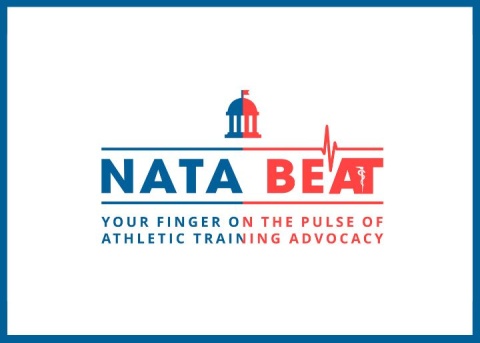
All athletic training state practice acts allow for athletic trainers to deliver physical medicine and rehabilitation services that are potentially billable, and most allow for the possibility of billing insurance companies; however, there is a very small percentage of ATs who are billing successfully and being reimbursed for their services.
Being able to perform a service legally under a scope of practice doesn’t guarantee that an athletic trainer will be reimbursed. This is a business decision made by insurance companies individually. When athletic trainers bill for the right types of services and document them exceptionally, the profession will have much greater success, now and in the future, of securing recognition by payors.
NATA is working to establish strategy that not only enhances near term reimbursement success, but will also lead to the long-term establishment of reimbursement as a standard for those ATs and employers who wish to use ATs in a billable capacity.
The NATA Third Party Reimbursement Initiative created the Guidance on Billing and Reimbursement for Athletic Trainers document in 2018 to shed light on reimbursement best practices. These best practices were established to optimize reimbursement success and minimize compliance and regulatory concerns. This resource, and other supporting materials, outlines how employers can implement billing and reimbursement practices for ATs who deliver physical medicine and rehabilitation services and desire to seek reimbursement from an insurer for selected services, said Joe Greene, MS, ATC, who facilitates third party reimbursement advocacy efforts on behalf of NATA.
“Traditionally, many athletic trainers do not understand how reimbursement could potentially affect them because they are contracted and employed by a given entity to deliver AT services that are not billed,” Greene said. “This traditional athletic training employment model highlights the value of athletic training services because ATs help to use health care resources effectively and minimize cost incurred by our health care systems. ATs in professional, collegiate, high school and industrial settings function under this model. It has been invaluable to our growth as a profession as we continually demonstrate the tremendous clinical ability of ATs while being extremely cost effective at the same time. However, ATs in health systems and independent physician and outpatient rehabilitation practices have begun to see value in billing autonomously for the services they render.”
As the COVID-19 pandemic increased in its reach, there was an increased interest in reimbursement from membership as some lost positions, at least temporarily, or have been furloughed. Greene said it raised the question to many ATs as to whether enhanced recognition and reimbursement could lead to not only more stable employment, but enhanced employment opportunities.
“COVID-19 has already changed the athletic training profession, with many ATs utilizing telehealth to treat patients to a much greater extent,” he said. “Eventually, our clinical processes will catch up to telehealth policy change. When this happens fully, it is our belief that Insurance companies will still maintain their established policy toward reimbursement for physical medicine and rehabilitation services delivered by ATs regardless of the shift into telehealth.
“In other words, if an insurance company already reimburses for athletic training, we will strongly advocate that they should reimburse for physical medicine and rehabilitation services whether they are delivered face to face or via telemedicine. Also, when payors choose to recognize ATs in the future, they would do so regardless of the mechanism of service delivery.”
Any AT is able to benefit from the NATA Billing and Reimbursement Guidance resource as it outlines how health systems and independent settings can implement reimbursements for ATs into their company. ATs in hospitals and health care systems are more likely to benefit from this resource because they already have a billing process that is understood more readily by payors, but the document is intended to provide guidance for any setting of employment.
“It is absolutely critical that ATs should only be billing for medically necessary services required to get an individual back to activities of daily life,” Greene said. “That is what Centers for Medicare and Medicaid Services (CMS) pays for – they do not pay for maintenance activity or return to sport activity. This is consistent with commercial payors as well. An athletic trainer should shift into billing cash if billing for return-to-sport activity. This is consistent with policy that payors employ when other professionals such as physical therapists and occupational therapists bill. We want to be consistent and be exceptional stewards to payors.”
As telehealth and telemedicine continues to increase in availability, understanding the billing and reimbursement process could be vital in the future for every AT.
“Telehealth is an opportunity for ATs to deliver care more efficiently,” Greene said. “The doors to utilizing telehealth have been opened very quickly. The adoption and implementation of telehealth was moving very slowly prior to COVID-19. State law and payor reimbursement for telehealth should increasingly align due to the changes at the federal level with CMS. With this being said, ATs will be able to use telehealth increasingly to provide care from a scope of practice perspective, but being able to use telehealth from a practice act standpoint is much different from being able to have an insurance company reimburse for it. To emphasize this point again, reimbursement is a business decision by an insurance company that we must advocate for at the state and the national level.
“We will continue to advocate strongly for reimbursement for telehealth and face-to-face care in the wake of COVID-19. Reimbursement may have just become much more important to many more of our members because of COVID-19. I hope that is the case.”
Remember emergency policies are temporary and will expire, and state practice acts must be consulted.
New documents have been added to the COVID-19 resource page to assist ATs in a wide range of topics, including the billing and reimbursement document. You can find more information about coronavirus topics on the resource page and NATA Now blog.




